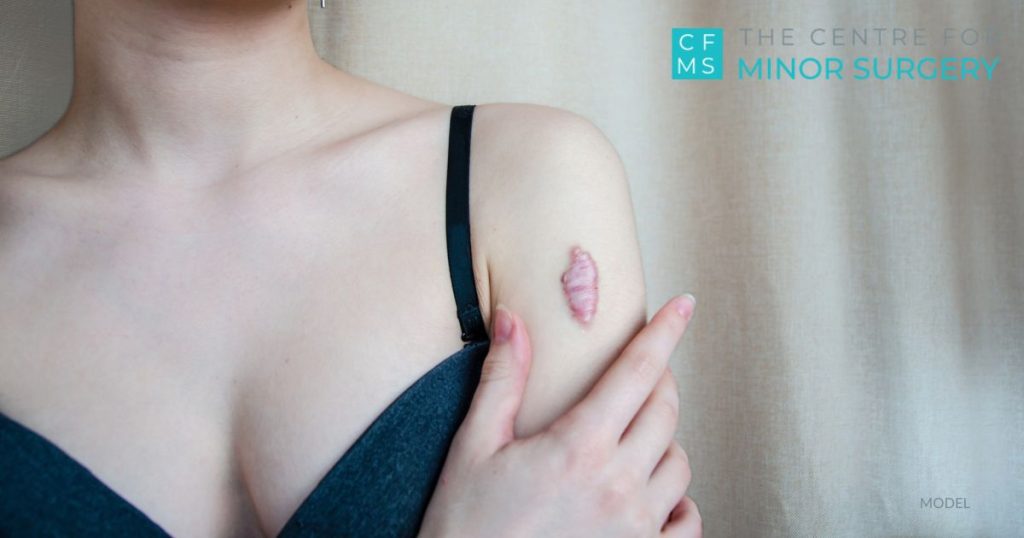Keloid scars can be a source of frustration and self-consciousness for many people. These raised, thickened scars extending beyond an original wound’s boundaries can appear unsightly and cause discomfort.
At The Centre for Minor Surgery, we understand the impact keloid scars can have on your confidence. This blog post will answer 6 commonly asked questions, from how to get rid of keloids to what they are and what causes them.
1. What Is a Keloid?
A keloid is a type of scar that forms when collagen, a protein in the skin, accumulates excessively during healing. Unlike other scars, keloids extend beyond the boundaries of the original wound. They can be raised, thick, firm, and have a smooth and shiny appearance. Keloids can vary in size, colour, and texture and may cause itching, pain, or tenderness.
2. What Causes Keloids to Form?
Keloids can develop in individuals with any skin type, but certain factors increase the likelihood of their formation. Common triggers for keloids include skin injuries such as surgical incisions, burns, acne, or piercings. Additionally, individuals with a family history of keloids are more prone to developing them. Other risk factors include hormonal imbalances, age (they often appear during adolescence or early adulthood), and certain genetic tendencies.
3. What Is a Hypertrophic Scar vs. a Keloid?
While keloids and hypertrophic scars share similarities, the two have fundamental differences. Like keloids, hypertrophic scars are raised and thickened. However, hypertrophic scars remain within the boundaries of the original wound and tend to improve over time. In contrast, keloids can continue to grow and spread beyond the initial wound area.
4. Do Keloids Go Away on Their Own?
Keloids typically do not go away without intervention. Unlike regular scars that gradually fade over time, keloids tend to persist and may even continue to grow larger if left untreated. However, the progression and behaviour of keloids can vary from person to person. Sometimes, small keloids may naturally become less noticeable or flatten slightly over time, but complete spontaneous resolution is rare. Early intervention is often crucial in preventing further growth and optimizing treatment outcomes.
5. How Is Keloid Scar Removal Performed?
The keloid is carefully excised during the procedure, and the wound is closed using meticulous surgical techniques to optimize healing. Our surgeons administer cortisone (steroid) injections directly into the scar after surgery to further shrink and flatten the keloid.
6. Can Keloid Scars Be Prevented?
Preventing keloid scars can be challenging, especially if you are genetically predisposed to them. However, minimizing skin trauma, avoiding unnecessary piercings or tattoos, and promptly treating acne or wounds may help reduce the risk. The American Academy of Family Physicians recommends using pressure earrings after getting your ears pierced to minimize the risk of a keloid scar from developing. Pressure dressings or cortisone shots may similarly help those who have had surgery or experienced skin trauma.
Request a Consultation
At The Centre for Minor Surgery, our experienced team is dedicated to helping you regain your confidence and achieve smoother, clearer skin. If you’d like to learn more about your options and which method may best suit your needs, please call our office today at (416) 663-9649 or request a consultation.


Leave a Reply